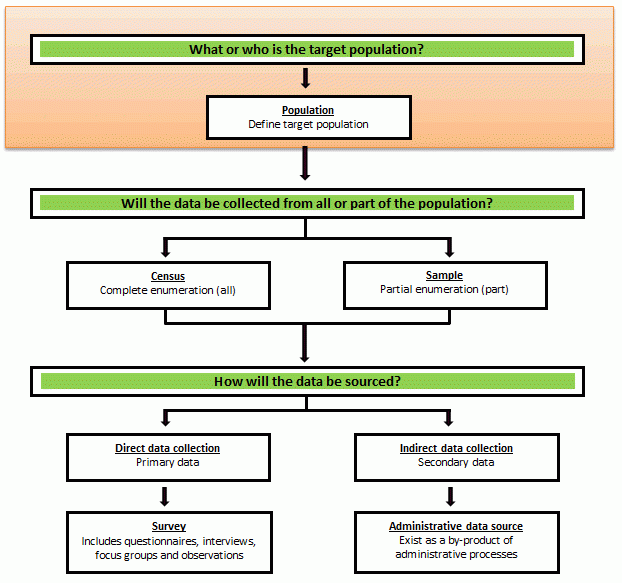Population
Definition
A population is any complete group with at least one characteristic in common. Populations are not just people. Populations may consist of, but are not limited to, people, animals, businesses, buildings, motor vehicles, farms, objects or events.
Importance of identifying the population
When looking at data, it is important to clearly identify the population being studied or referred to, so that you can understand who or what are included in the data. For example, if you were looking at some Australian farming data, you would need to understand whether the population the data refers to is all farms in Australia, just farms that grow crops, those that only have livestock, or some other type of farm.
Start with the population
The population needs to be clearly identified at the beginning of a study. The study should be based on a clear understanding of who or what is of interest, as well as the type of information required from that population.
Collecting data about a population
Step 1 - What is a population?
Image

Description
Collecting data about a population flowchart
Image
